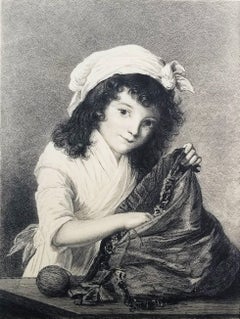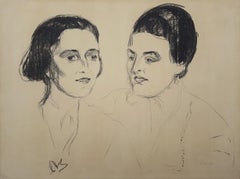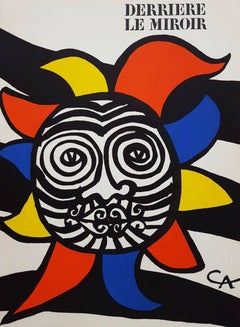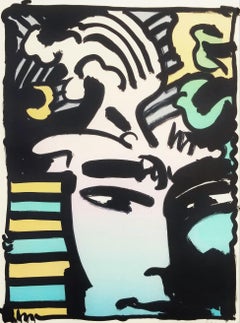Want more images or videos?
Request additional images or videos from the seller
1 of 12
Benjamin WestThe Father and Brother of Benjamin West1873
1873
$150List Price
About the Item
- Creator:Benjamin West (1738 - 1820, American)
- Creation Year:1873
- Dimensions:Height: 15.25 in (38.74 cm)Width: 14.5 in (36.83 cm)
- Medium:
- Movement & Style:
- Period:
- Condition:
- Gallery Location:Saint Augustine, FL
- Reference Number:1stDibs: LU12121366553
About the Seller
5.0
Platinum Seller
Premium sellers with a 4.7+ rating and 24-hour response times
Established in 1978
1stDibs seller since 2015
1,361 sales on 1stDibs
Authenticity Guarantee
In the unlikely event there’s an issue with an item’s authenticity, contact us within 1 year for a full refund. DetailsMoney-Back Guarantee
If your item is not as described, is damaged in transit, or does not arrive, contact us within 7 days for a full refund. Details24-Hour Cancellation
You have a 24-hour grace period in which to reconsider your purchase, with no questions asked.Vetted Professional Sellers
Our world-class sellers must adhere to strict standards for service and quality, maintaining the integrity of our listings.Price-Match Guarantee
If you find that a seller listed the same item for a lower price elsewhere, we’ll match it.Trusted Global Delivery
Our best-in-class carrier network provides specialized shipping options worldwide, including custom delivery.You May Also Like
19th century color lithograph portraits ship seascape patriotic flags military
By Nathaniel Currier
Located in Milwaukee, WI
The present hand-colored lithograph is an excellent example of patriotic mid-nineteenth century American imagery. The print shows the battle and several of the major figures involved in the Battle of Lake Erie: At the center is a view of several frigates on the lake, embroiled in conflict. Above the battle is the quotation: "We have met the enemy and they are ours." Surrounding are laurel-lined roundels with portraits of Oliver Hazard Perry (1785-1819), Stephen Dicateur (1779-1820), Johnston Blakeley (1871-1814), William Bainbridge (1774-1833), David Porter (1780-1843), and James Lawrence (1781-1813) - all of these framed by American flags, banners and cannons. This print shows that the Battle of Lake Erie, part of the War of 1812, still held resonance for American audiences several decades later and was part of the larger narrative of the founding of the country.
9.5 x 13.5 inches, artwork
20 x 23.38 inches, frame
Entitled in the image
Signed in the stone, lower left "Lith. and Pub. by N. Currier"
Inscribed lower right "2 Spruce N.Y." and "No. 1"
Copyrighted lower center "Entered according to Act of Congress in the year 1846 by N. Currier in the Clerk's office of the Southern District of N.Y."
Framed to conservation standards using 100 percent rag matting and housed in a gold gilded moulding.
Nathaniel Currier was a tall introspective man with a melancholy nature. He could captivate people with his piercing stare or charm them with his sparkling blue eyes. Nathaniel was born in Roxbury, Massachusetts on March 27th, 1813, the second of four children. His parents, Nathaniel and Hannah Currier, were distant cousins who lived a humble yet spartan life. When Nathaniel was eight years old, tragedy struck. Nathaniel’s father unexpectedly passed away leaving Nathaniel and his eleven-year-old brother Lorenzo to provide for the family. In addition to their mother, Nathaniel and Lorenzo had to care for six-year-old sister Elizabeth and two-year-old brother Charles. Nathaniel worked a series of odd jobs to support the family, and at fifteen, he started what would become a life-long career when he apprenticed in the Boston lithography shop of William and John Pendleton.
A Bavarian gentleman named Alois Senefelder invented lithography just 30 years prior to young Nat Currier’s apprenticeship. While under the employ of the brothers Pendleton, Nat was taught the art of lithography by the firm’s chief printer, a French national named Dubois, who brought the lithography trade to America.
Lithography involves grinding a piece of limestone flat and smooth then drawing in mirror image on the stone with a special grease pencil. After the image is completed, the stone is etched with a solution of aqua fortis leaving the greased areas in slight relief. Water is then used to wet the stone and greased-ink is rolled onto the raised areas. Since grease and water do not mix, the greased-ink is repelled by the moisture on the stone and clings to the original grease pencil lines. The stone is then placed in a press and used as a printing block to impart black on white images to paper.
In 1833, now twenty-years old and an accomplished lithographer, Nat Currier left Boston and moved to Philadelphia to do contract work for M.E.D. Brown, a noted engraver and printer. With the promise of good money, Currier hired on to help Brown prepare lithographic stones of scientific images for the American Journal of Sciences and Arts. When Nat completed the contract work in 1834, he traveled to New York City to work once again for his mentor John Pendleton, who was now operating his own shop located at 137 Broadway. Soon after the reunion, Pendleton expressed an interest in returning to Boston and offered to sell his print shop to Currier. Young Nat did not have the financial resources to buy the shop, but being the resourceful type he found another local printer by the name of Stodart. Together they bought Pendleton’s business.
The firm ‘Currier & Stodart’ specialized in "job" printing. They produced many different types of printed items, most notably music manuscripts for local publishers. By 1835, Stodart was frustrated that the business was not making enough money and he ended the partnership, taking his investment with him. With little more than some lithographic stones, and a talent for his trade, twenty-two year old Nat Currier set up shop in a temporary office at 1 Wall Street in New York City. He named his new enterprise ‘N. Currier, Lithographer’
Nathaniel continued as a job printer and duplicated everything from music sheets to architectural plans. He experimented with portraits, disaster scenes and memorial prints, and any thing that he could sell to the public from tables in front of his shop. During 1835 he produced a disaster print Ruins of the Planter's Hotel, New Orleans, which fell at two O’clock on the Morning of the 15th of May 1835, burying 50 persons, 40 of whom Escaped with their Lives. The public had a thirst for newsworthy events, and newspapers of the day did not include pictures. By producing this print, Nat gave the public a new way to “see” the news. The print sold reasonably well, an important fact that was not lost on Currier.
Nat met and married Eliza Farnsworth in 1840. He also produced a print that same year titled Awful Conflagration of the Steamboat Lexington in Long Island Sound on Monday Evening, January 18, 1840, by which melancholy occurrence over One Hundred Persons Perished. This print sold out very quickly, and Currier was approached by an enterprising publication who contracted him to print a single sheet addition of their paper, the New York Sun. This single page paper is presumed to be the first illustrated newspaper ever published.
The success of the Lexington print launched his career nationally and put him in a position to finally lift his family up. In 1841, Nat and Eliza had their first child, a son they named Edward West Currier. That same year Nat hired his twenty-one year old brother Charles and taught him the lithography trade, he also hired his artistically inclined brother Lorenzo to travel out west and make sketches of the new frontier as material for future prints. Charles worked for the firm on and off over the years, and invented a new type of lithographic crayon which he patented and named the Crayola. Lorenzo continued selling sketches to Nat for the next few years.
In 1843, Nat and Eliza had a daughter, Eliza West Currier, but tragedy struck in early 1847 when their young daughter died from a prolonged illness. Nat and Eliza were grief stricken, and Eliza, driven by despair, gave up on life and passed away just four months after her daughter’s death.
The subject of Nat Currier’s artwork changed following the death of his wife and daughter, and he produced many memorial prints and sentimental prints during the late 1840s. The memorial prints generally depicted grief stricken families posed by gravestones (the stones were left blank so the purchasers could fill in the names of the dearly departed). The sentimental prints usually depicted idealized portraits of women and children, titled with popular Christian names of the day.
Late in 1847, Nat Currier married Lura Ormsbee, a friend of the family. Lura was a self-sufficient woman, and she immediately set out to help Nat raise six-year-old Edward and get their house in order. In 1849, Lura delivered a son, Walter Black Currier, but fate dealt them a blow when young Walter died one year later. While Nat and Lura were grieving the loss of their new son, word came from San Francisco that Nat’s brother Lorenzo had also passed away from a brief illness. Nat sank deeper into his natural quiet melancholy. Friends stopped by to console the couple, and Lura began to set an extra place at their table for these unexpected guests. She continued this tradition throughout their lives.
In 1852, Charles introduced a friend, James Merritt Ives, to Nat and suggested he hire him as a bookkeeper. Jim Ives was a native New Yorker born in 1824 and raised on the grounds of Bellevue Hospital where his father was employed as superintendent. Jim was a self-trained artist and professional bookkeeper. He was also a plump and jovial man, presenting the exact opposite image of his new boss.
Jim Ives met Charles Currier through Caroline Clark, the object of Jim’s affection. Caroline’s sister Elizabeth was married to Charles, and Caroline was a close friend of the Currier family. Jim eventually proposed marriage to Caroline and solicited an introduction to Nat Currier, through Charles, in hopes of securing a more stable income to support his future wife.
Ives quickly set out to improve and modernize his new employer’s bookkeeping methods. He reorganized the firm’s sizable inventory, and used his artistic skills to streamline the firm’s production methods. By 1857, Nathaniel had become so dependent on Jims’ skills and initiative that he offered him a full partnership in the firm and appointed him general manager. The two men chose the name ‘Currier & Ives’ for the new partnership, and became close friends.
Currier & Ives produced their prints in a building at 33 Spruce Street where they occupied the third, fourth and fifth floors. The third floor was devoted to the hand operated printing presses that were built by Nat's cousin, Cyrus Currier, at his shop Cyrus Currier & Sons in Newark, NJ. The fourth floor found the artists, lithographers and the stone grinders at work. The fifth floor housed the coloring department, and was one of the earliest production lines in the country. The colorists were generally immigrant girls, mostly German, who came to America with some formal artistic training. Each colorist was responsible for adding a single color to a print. As a colorist finished applying their color, the print was passed down the line to the next colorist to add their color. The colorists worked from a master print displayed above their table, which showed where the proper colors were to be placed. At the end of the table was a touch up artist who checked the prints for quality, touching-in areas that may have been missed as it passed down the line. During the Civil War, demand for prints became so great that coloring stencils were developed to speed up production.
Although most Currier & Ives prints were colored in house, some were sent out to contract artists. The rate Currier & Ives paid these artists for coloring work was one dollar per one hundred small folios (a penny a print) and one dollar per one dozen large folios. Currier & Ives also offered uncolored prints to dealers, with instructions (included on the price list) on how to 'prepare the prints for coloring.' In addition, schools could order uncolored prints from the firm’s catalogue to use in their painting classes.
Nathaniel Currier and James Merritt Ives attracted a wide circle of friends during their years in business. Some of their more famous acquaintances included Horace Greeley, Phineas T. Barnum, and the outspoken abolitionists Rev. Henry Ward, and John Greenleaf Whittier (the latter being a cousin of Mr. Currier).
Nat Currier and Jim Ives described their business as "Publishers of Cheap and Popular Pictures" and produced many categories of prints. These included Disaster Scenes, Sentimental Images, Sports, Humor, Hunting Scenes, Politics, Religion, City and Rural Scenes, Trains, Ships, Fire Fighters, Famous Race Horses, Historical Portraits, and just about any other topic that satisfied the general public's taste. In all, the firm produced in excess of 7500 different titles, totaling over one million prints produced from 1835 to 1907.
Nat Currier retired in 1880, and signed over his share of the firm to his son Edward. Nat died eight years later at his summer home 'Lion’s Gate' in Amesbury, Massachusetts. Jim Ives remained active in the firm until his death in 1895, when his share of the firm passed to his eldest son, Chauncey.
In 1902, faced will failing health from the ravages of Tuberculosis, Edward Currier sold his share of the firm to Chauncey Ives...
Category
1850s Victorian Landscape Prints
Materials
Watercolor, Lithograph
$4,850
H 18.88 in W 23.13 in
HRH The Duke of Edinburgh, Vanity Fair Royalty portrait chromolithograph, 1874
Located in Melbourne, Victoria
'First Violin'
Chromolithograph, 1884, after Ape (Carlo Pellegrini 1839-1889)
Vanity Fair portrait of Alfred (1844-1900), the second son of Queen Victoria. He was known as the Duke...
Category
Late 19th Century Victorian Portrait Prints
Materials
Lithograph
$165
H 15.75 in W 11.03 in
1st Violin Duke of Edinburgh: 19th C. Vanity Fair Caricature by Ape (Pellegrini)
By Carlo Pellegrini 1
Located in Alamo, CA
Vanity Fair color chromolithograph caricature of "First Violin " Prince Alfred, Duke of Edinburgh and Saxe-Coburg and Gothan by Ape (Carlo Pellegrini)...
Category
Late 19th Century Victorian Portrait Prints
Materials
Lithograph
$236 Sale Price
20% Off
H 15 in W 10.25 in
Sir Henry James, Statesman: 19th C. Vanity Fair Caricature by Pellegrini (Ape)
By Carlo Pellegrini 1
Located in Alamo, CA
A Vanity Fair chromolithograph caricature of Sir Henry James, M.P., ("Nervous"), Statesman by Ape (Carlo Pellegrini) March 7, 1874, No. 164 from the ...
Category
Late 19th Century Victorian Portrait Prints
Materials
Lithograph
$156 Sale Price
20% Off
H 15 in W 10.25 in
Carlo Pellegrini, Vanity Fair artist portrait chromolithograph 1889
Located in Melbourne, Victoria
'Ape'
Vanity Fair portrait of Carlo Pellegrini (1839-1889), nicknamed 'Ape', who was an artist who served from 1869 to 1889 as a caricaturist for Va...
Category
Late 19th Century Victorian Portrait Prints
Materials
Lithograph
Oscar Asche, Australian actor, Vanity Fair portrait chromolithograph, 1911
Located in Melbourne, Victoria
'Kismet'
Vanity Fair portrait of Mr Oscar Asche (1871 -1936) who was an Australian actor, director and writer, best known for the record-breakin...
Category
Late 19th Century Victorian Portrait Prints
Materials
Lithograph
$180
H 15.75 in W 10.63 in
'the Cavalry Division', Vanity Fair military army horse chromolithograph, 1900
Located in Melbourne, Victoria
'The Cavalry Division'
Vanity Fair portrait of Field Marshall John French (1852-1925). He was an English commander who served in the Soudan, Boer War and World War I.
Godfrey Doug...
Category
Early 20th Century Victorian Portrait Prints
Materials
Lithograph
Louis Pasteur, Vanity Fair scientist caricature chromolithograph print, 1887
Located in Melbourne, Victoria
'Hydrophobia'
Vanity Fair medical portrait of Louis Pasteur.
Louis Pasteur (1822 - 1895) was a French chemist and microbiologist born in Dole. He is remembered for his remarkable b...
Category
Late 19th Century Victorian Figurative Prints
Materials
Lithograph
$180
H 14.97 in W 10.24 in
Ira D Sankey, Vanity Fair singer and composer portrait chromolithograph, 1884
Located in Melbourne, Victoria
'Praise and Prayer'
Chromolithograph, 1874, after Ape (Carlo Pellegrini 1839-1889)
Vanity Fair portrait of Ira D. Sankey (1840 -1908), known as The Sweet Singer of Methodism, who w...
Category
Late 19th Century Victorian Portrait Prints
Materials
Lithograph
$95
H 15.36 in W 10.24 in
The Duke of Devonshire, Vanity Fair portrait chromolithograph, 1874
Located in Melbourne, Victoria
'Position'
Chromolithograph, 1874, after Ape (Carlo Pellegrini 1839-1889)
Vanity Fair portrait of the Duke of Devonshire.
380mm by 260mm (sheet)
Category
Late 19th Century Victorian Portrait Prints
Materials
Lithograph
More From This Seller
View AllMelle Brongniart, Baronne Pichon (Miss Brongniart, Baroness Pichon) /// Antique
Located in Saint Augustine, FL
Artist: Eugène Marie Louis Chiquet (French, 1863-1942)
Title: "Melle Brongniart, Baronne Pichon (Miss Brongniart, Baroness Pichon)"
Portfolio: Gazette des Beaux-Arts
Year: 1901
Mediu...
Category
Early 1900s Victorian Portrait Prints
Materials
Etching, Intaglio
Louise and Else Heyerdahl /// Expressionism Edvard Munch Portrait Figurative Art
By Edvard Munch
Located in Saint Augustine, FL
Artist: Edvard Munch (Norwegian, 1863-1944)
Title: "Louise and Else Heyerdahl"
*Signed by Munch in pencil lower right
Year: 1920
Medium: Original Lithograph on heavy cream wove paper...
Category
1920s Expressionist Portrait Prints
Materials
Lithograph
Derrière Le Miroir No. 156 (front cover) /// Modern Abstract Alexander Calder
By Alexander Calder
Located in Saint Augustine, FL
Artist: Alexander Calder (American, 1898-1976)
Title: "Untitled (front cover)"
Portfolio: Derrière le Miroir (No. 156)
*Issued unsigned, though signed by Calder in the plate (printed signature) lower right
Year: 1966
Medium: Original Lithograph on smooth wove paper
Limited edition: Unknown
Printer: Arte Adrien Maeght, Paris, France
Publisher: Galerie Maeght, Paris, France
Sheet size: 14.75" x 11"
Condition: In excellent condition
Notes:
Lithograph produced for the 1966 No. 156 "Derrière le Miroir" portfolio in conjunction with a special exhibition of Calder's work at Galerie Maeght, Paris, France in February of 1966 which featured 13 totems and 27 gouaches. The complete folio included a poem by Jacques Prévert and texts by Professor Meyer Schapiro, Alexander Calder, and Nicholas Guppy. Small spiral lithograph and text on verso as issued.
In October 1945, the French art dealer Aimé Maeght opens his art gallery at 13 Rue de Téhéran in Paris. His beginning coincides with the end of Second World War and the return of a number of exiled artists back to France. The magazine Derriere Le Miroir was created in October 1946 and published without interruption until 1982. Maeght's ambition in establishing his print shop and his publication magazine Derriere Le Miroir was to make available to a broader audience less expensive printed imagery by the artists of his time, many whom were represented by his Paris gallery...
Category
1960s Modern Portrait Prints
Materials
Lithograph
Aztec Man /// Peter Max Portrait Pop Art Colorful Fantasy Lithograph Modern Art
By Peter Max
Located in Saint Augustine, FL
Artist: Peter Max (German-American, 1937-)
Title: "Aztec Man"
*Signed by Max in pencil lower right
Year: 1973
Medium: Original Lithograph on Arches paper
Limited edition: 205/300
Pri...
Category
1970s Pop Art Portrait Prints
Materials
Lithograph
Dame mit Reiher (Woman with a Tuft of Heron Feathers) /// German Expressionism
By Otto Dix
Located in Saint Augustine, FL
Artist: Otto Dix (German, 1891-1969)
Title: "Dame mit Reiher (Woman with a Tuft of Heron Feathers)"
Portfolio: Die Schaffenden, Vol. 5, No. 1
*Signed and dated by Dix in pencil lower right
Year: 1923
Medium: Original Lithograph on light cream smooth wove paper
Limited edition: approx. 120
Printer: likely the artist Dix himself, Düsseldorf, Germany
Publisher: Euphorion Verlag, Berlin, Germany
Reference: "Otto Dix: Das Graphische Werk" - Karsch No. 62/II c, pages 84, 147
Framing: Recently beautifully framed in a modern gold moulding with 100% cotton rag matting and Museum Glass
Framed size: 26" x 21.82"
Sheet size: 16.25" x 12.25"
Condition: In excellent condition
Rare
Notes:
Provenance: private collection - Robert Kuennen, Oberlin, OH. Euphorion Verlag chop mark/blind stamp lower right. "Dix Fraukopf" (Dix Woman Head) pencil inscribed lower center.
"The brim of her hat loops to make a shadow, the better to show her gaunt profile. Strands of hair writhe against her cheek and complement a fur stole on her shoulder. In 1923 Otto Dix went to Düsseldorf to learn new printing skills, including lithography which would show his drawing skills to better effect. He made a series of character studies, including this affecting portrayal of a pale woman reduced almost to a shadow of herself. Eyes closed to the exquisite world represented by those materials set out by the artist, she seems scarcely aware." - Sotheby's, London, UK
Biography:
Otto Dix (born December 2, 1891, Untermhaus, Thuringia, Germany—died...
Category
1920s Expressionist Portrait Prints
Materials
Lithograph
Nordjyllands Kunstmuseum (The Brooch. Eva Mudocci) Poster /// Edvard Munch Litho
By Edvard Munch
Located in Saint Augustine, FL
Artist: (after) Edvard Munch (Norwegian, 1863-1944)
Title: "Nordjyllands Kunstmuseum (The Brooch. Eva Mudocci)"
Year: 1973
Medium: Original Lithograph, Exhibition Poster on heavy wove paper
Limited edition: Unknown
Printer: Unknown
Publisher: Nordjyllands Kunstmuseum, Aalborg, Denmark
Sheet size: 35" x 21.5"
Image size: 24.75" x 19"
Condition: Some minor handling creases. Light toning at edges. In otherwise excellent condition
Rare
Notes:
Printed in four colors: black, black, tan, and red-orange. Produced for a special posthumous exhibition of Munch's work at the Nordjyllands Kunstmuseum, Aalborg, Denmark from August 16 - October 21, 1973. The image featured on this poster is Munch's 1903 lithograph edition "The Brooch. Eva Mudocci", (Woll No. 244, page 208-209).
Edvard Munch would build a strong relationship with Eva Mudocci which lasted many years. They were connected through both romance and also friendship, with the two alternating in importance over time. There was a great mutual respect for each other, with Mudocci being a highly talented violinist from the UK who would regularly tour throughout Europe. They first got together in Paris...
Category
1970s Expressionist Portrait Prints
Materials
Lithograph
$300 Sale Price
60% Off



